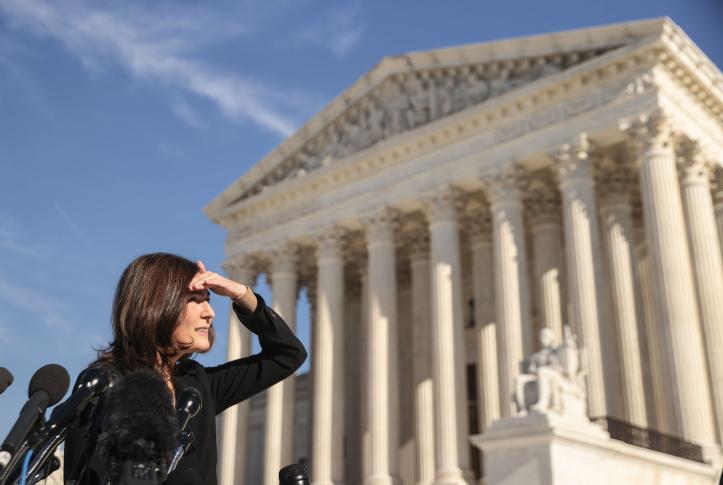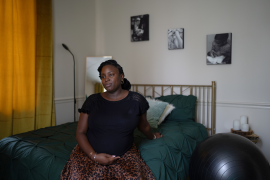After the oral arguments in Dobbs v Jackson Women’s Health Organization, observers surmised that the Supreme Court is likely to eliminate or severely curtail constitutional abortion rights. Should this happen, public health experts predict the worst immediate fallout for people of color and low-income people, particularly those with existing health risks. This near-term impact is likely to have longer-term consequences for infants and children, in the form of preterm birth, low birthweight, higher poverty rates, and impaired child development and well-being. Mitigating these risks will require a commitment to investing in maternal and child health care, economic and social supports, preventive services for at-risk families, childcare, and early child development.
A rollback of abortion rights is a matter of extreme national concern, but some states have been particularly aggressive in pursuing abortion restrictions and have indicated that should the Court end the right to abortion under the Constitution, they will immediately act to make all abortions unlawful. Such a ban would heighten the risk that people who experience unplanned pregnancies will be forced to continue them, even if they experience severe risks themselves or to their babies. An amicus (i.e., friend-of-the-court) brief filed on behalf of the Jackson Women’s Health Organization by the American Public Health Association (APHA), the Guttmacher Institute, the Center for U.S. Policy, and hundreds of public health scholars and professionals, identified 14 states (Alabama, Arkansas, Indiana, Kansas, Kentucky, Louisiana, Mississippi, Nebraska, North Dakota, Ohio, Oklahoma, South Carolina, South Dakota, and Texas) with the tightest restrictions around abortion as measured by seven factors: lengthy counseling requirements, long waiting periods, ultrasound requirements, parental notification and consent requirements, bans on abortions that begin before viability (known as gestational limits), bans on public and private insurance coverage for abortions, and discriminatory regulation of clinics and facilities providing abortion. Of these 14 states, all but three — Indiana, Kansas, and Nebraska — also have trigger laws in place to immediately implement an outright ban on previability abortion.
As the public health brief argues, these states underscore the “central paradox” in the debate over the future of abortion: those with the most restrictive abortion policies also show the weakest maternal and child health outcomes and are least likely to invest in at-risk populations. In presenting evidence, the brief shows poorer maternal and child health outcomes for these states across a range of longstanding risk measures: mistimed and unwanted pregnancy, early entry into prenatal care, low infant birthweight, infant mortality, child poverty, and adverse childhood experiences. The brief notes that Mississippi, whose previability abortion ban is the subject of Dobbs, ranked last in the Commonwealth Fund’s 2020 composite score for health system performance on measures such as overall preventable mortality and children without appropriate preventive care.
This paradox carries over into state policies. Only half of the high-restriction states have adopted the Affordable Care Act Medicaid expansion for poor adults, despite its role in improving access to care and health, as well as the additional financial incentives that the American Rescue Plan Act (ARPA) offers. Because overall good health is so important in pregnancy, the state’s failure to insure low-income people fundamentally undermines one of the essential preconditions to a healthy pregnancy. These states also limit pregnancy-related Medicaid eligibility. As the APHA brief notes, in six of the 14, pregnancy-related eligibility standards fall below the national median of twice the federal poverty level (i.e., annual income of $25,760 for an individual in 2021). As of December 2021, only four high-restriction states (Indiana, Ohio, South Carolina, and Texas) reported moving toward adopting a new Medicaid eligibility option that allows states to ensure uninterrupted coverage of postpartum care. While three of these states are taking the full 12-month option, Texas has indicated its intention to limit coverage to six months.
There are also issues of health care accessibility and quality. Of particular importance are issues surrounding prenatal care, delivery and childbirth, and postpartum care. A recent announcement from the Centers for Medicare and Medicaid Services offers states strategies for improving “birthing-friendly” hospitals. States that enroll beneficiaries in comprehensive managed care plans, which most high-restriction states do already, could raise contract standards that plans must follow for pregnancy and infant health care as well as Medicaid’s Early and Periodic Screening, Diagnostic and Treatment (EPSDT) program for adolescents at high pregnancy risk. States also could expand the scope and generosity of their Special Supplemental Nutrition Program for Women, Infants, and Children (WIC) programs. However, the question remains: will states that restrict abortion or ban it entirely pursue these improvements?
The states challenging Roe, along with the friends of the court, were eloquent in expressing their concern for life and their belief that abortion is no longer needed because all families can flourish in modern society. But if the post-Roe moment arrives, will these same voices work to strengthen policies that ensure all mothers and children attain optimal health and well-being? The record in this regard is not encouraging.




